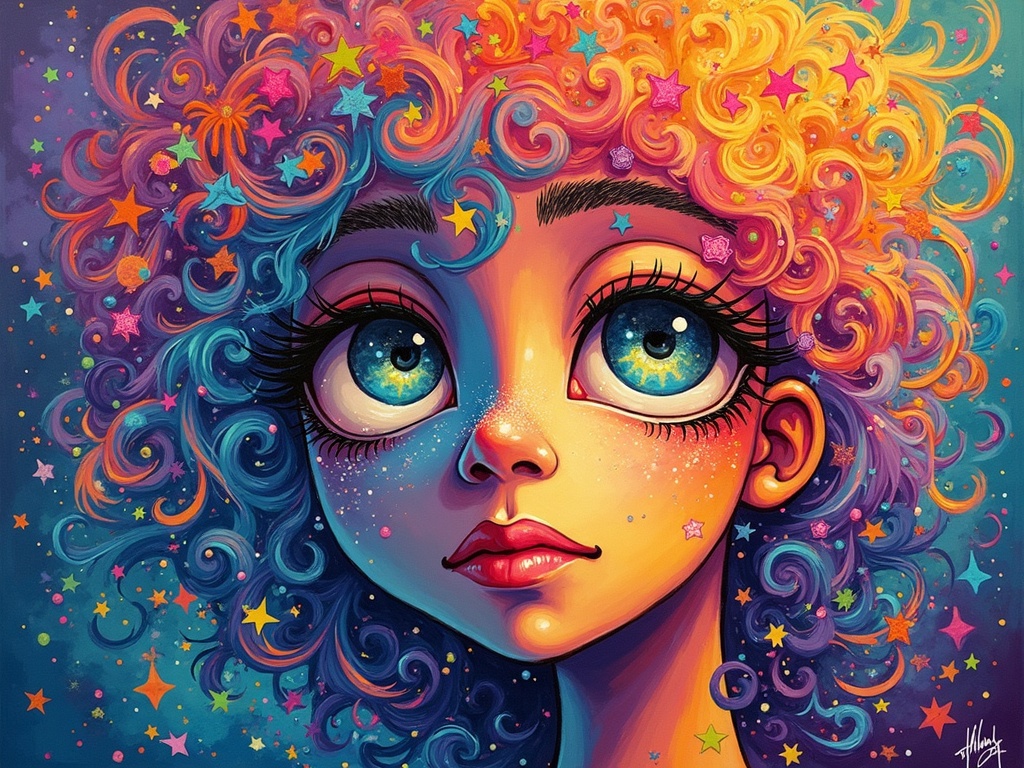Why Buy Original Art Instead of Prints: An Emotional Connection
Imagine walking into a room and being immediately drawn to a piece of art. Not just noticing it, but truly feeling something—a memory resurfacing, a sense of peace washing over you, or a surge of inspiration igniting within. That’s the power of art, and while prints can be aesthetically pleasing, they often lack the profound emotional connection that original art provides. Why settle for a copy when you can own a unique piece of someone’s soul?
The Tangible Soul of Original Art
There’s an undeniable energy emanating from original art. It’s the culmination of an artist’s vision, skill, and countless hours of dedication poured onto a canvas, sculpted from clay, or meticulously crafted from various materials. Each brushstroke, each carving, each carefully chosen color tells a story, not just of the subject, but of the artist themselves.
Uniqueness and Authenticity
A print, by its very nature, is a reproduction. It’s a copy intended to mimic the original, but it can never truly replicate the nuances and subtle imperfections that make the original unique. Think of it like a mass-produced product versus a hand-crafted item. Both might serve a similar purpose, but one carries the weight of human touch, the mark of the maker.
When you buy original art, you’re acquiring something truly one-of-a-kind. No one else in the world will possess the exact same piece. This exclusivity adds to the value, both intrinsically and potentially financially, and fosters a deeper sense of ownership and pride.
The Artist’s Hand
Consider the texture of an oil painting, the impasto layers catching the light in a way no print can replicate. Or the intricate details of a hand-pulled print, the slight variations in ink density that reveal the artist’s process. These are the tangible elements that connect you to the artist and their creative journey. Prints often flatten these nuances, losing the depth and character of the original.
Emotional Resonance: Connecting with the Artist’s Vision
Beyond the tangible qualities, original art offers a deeper emotional connection. When you buy a piece of art, you’re not just buying a decorative object; you’re investing in the artist’s vision, their perspective, and their ability to translate emotions and ideas into a visual form. [internal_link] This connection can be incredibly powerful and enriching.
A Window into Another World
Art has the power to transport us, to evoke memories, and to challenge our perspectives. An original painting of a serene landscape might bring a sense of calm and tranquility to a busy room. A bold, abstract sculpture might spark conversation and inspire new ideas. Art, in its best form, expands our horizons and enriches our lives.
Prints can offer a glimpse into these worlds, but they lack the immediacy and authenticity of the original. It’s like reading a summary of a book versus experiencing the full narrative firsthand.
Supporting Creativity and Passion
When you buy original art, you’re directly supporting the artist and their craft. You’re investing in their future, empowering them to continue creating and sharing their vision with the world. This act of support is deeply meaningful for artists, who often dedicate years to honing their skills and pursuing their passion.
The Investment Factor: More Than Just Monetary Value
While the primary reason to buy original art should be the emotional connection and personal enjoyment, it’s also worth considering the potential investment value. Of course, not all art appreciates in value, but carefully chosen pieces by emerging or established artists can become valuable assets over time.
A Growing Market
The art market has seen significant growth in recent years, with increased demand for original works. As more people recognize the value of owning unique and authentic pieces, the demand for original art is likely to continue to rise. This increased demand can, in turn, drive up the value of certain artworks.
Beyond the Price Tag
However, the investment value of art extends beyond monetary gains. Original art is an investment in culture, in creativity, and in the emotional well-being of both the artist and the collector. It’s an investment in something that will bring joy, inspiration, and intellectual stimulation for years to come.
Considerations Before Making the Leap
Buying original art is a significant decision, and it’s important to consider your budget, your taste, and your long-term goals before making a purchase.
Finding Your Style
Explore different art galleries, online platforms, and art fairs to discover the styles and artists that resonate with you. Don’t be afraid to experiment and trust your instincts. The most important thing is to find art that you genuinely love and that speaks to you on a personal level.
Budgeting Wisely
Original art can range in price from a few hundred dollars to millions, so it’s important to set a realistic budget. Remember that you don’t have to spend a fortune to acquire beautiful and meaningful art. Many emerging artists offer their work at affordable prices.
Asking Questions
Don’t hesitate to ask the artist or gallery representative questions about the artwork, the artist’s background, and the materials used. Understanding the story behind the art can deepen your appreciation and connection to the piece.
Beyond Decoration: Art as a Reflection of Self
Ultimately, the decision to buy original art instead of prints comes down to personal preference. However, original art offers something that prints simply cannot replicate: a tangible connection to the artist, a unique and authentic object, and a deeper emotional resonance. It’s an investment not just in art, but in yourself, your well-being, and your connection to the world around you.
When you surround yourself with art that you love, you create a space that reflects your personality, your values, and your aspirations. It’s a space that inspires, comforts, and reminds you of the beauty and power of human creativity. So, the next time you’re considering adding art to your home, ask yourself: are you looking for a decoration, or are you looking for a connection?
